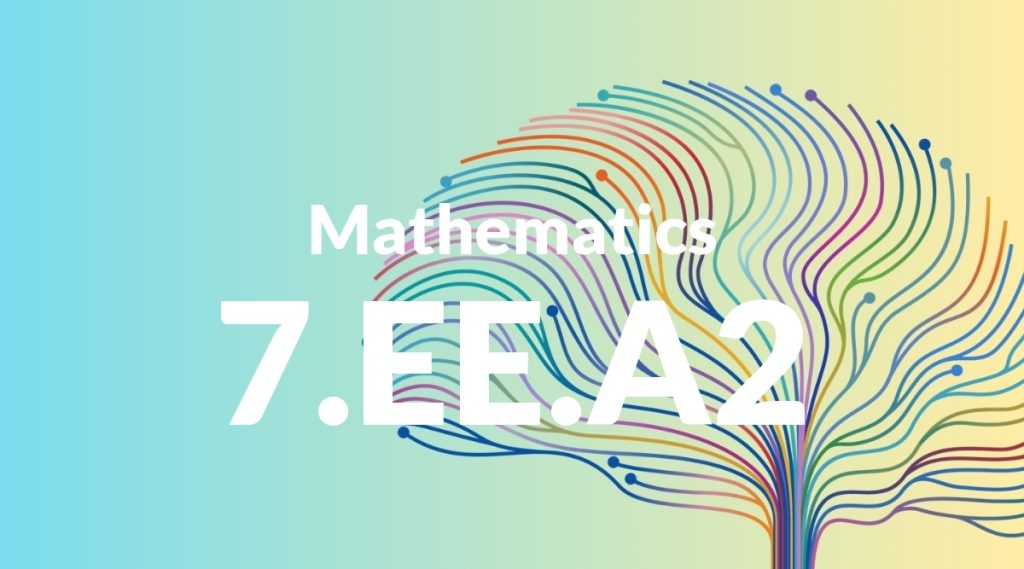Standard: 7.EE.A2 – Understand that rewriting an expression in different forms in a problem context can shed light on the problem and how the quantities in it are related. For example, a + 0.05a = 1.05a means that ‘increase by 5%’ is the same as ‘multiply by 1.05.’
Grade level: Grade 7
Subject: Mathematics
Domain: Expressions & Equations
Teacher Overview
This standard emphasizes the importance of understanding how different forms of an expression can provide insights into the relationships between quantities in a problem. Mastering this skill is crucial for solving real-world problems and lays the foundation for more advanced algebraic concepts. Students should be comfortable with basic algebraic concepts such as combining like terms, using the distributive property, and understanding percentages and their decimal equivalents.
After mastering this standard, students will be able to solve more complex algebraic equations and inequalities, and will be better prepared for topics in linear equations and functions.
Common Misconception 1
A common misconception is that rewriting an expression changes its value. This is incorrect because the value remains the same; only the form changes. For example, a + 0.05a is the same as 1.05a.
Intervention 1
To address this misconception, use visual aids and manipulatives to show that the expressions are equivalent in value. Practice with multiple examples to reinforce this concept.
Common Misconception 2
Another misconception is confusing rewriting expressions with solving equations. Rewriting expressions is about changing the form, while solving equations involves finding the value of the variable.
Intervention 2
Provide clear examples and guided practice to distinguish between the two processes. Use step-by-step instructions and practice problems to reinforce the difference.
Prerequisite Knowledge
Students should have a basic understanding of algebraic expressions, including combining like terms and the distributive property. They should also be familiar with basic percentages and their decimal equivalents.
Subsequent Knowledge
After mastering this standard, students will be able to solve more complex algebraic equations and inequalities. They will also be better prepared to tackle topics in linear equations and functions in higher grades.
Instructional Activities
- Practice rewriting expressions with different forms using real-world scenarios.
- Group activities to identify and rewrite expressions in multiple forms.
- Interactive games that focus on rewriting expressions.
- Use of visual aids and manipulatives to demonstrate equivalence of expressions.
- Problem-solving tasks that require understanding of rewritten expressions.




